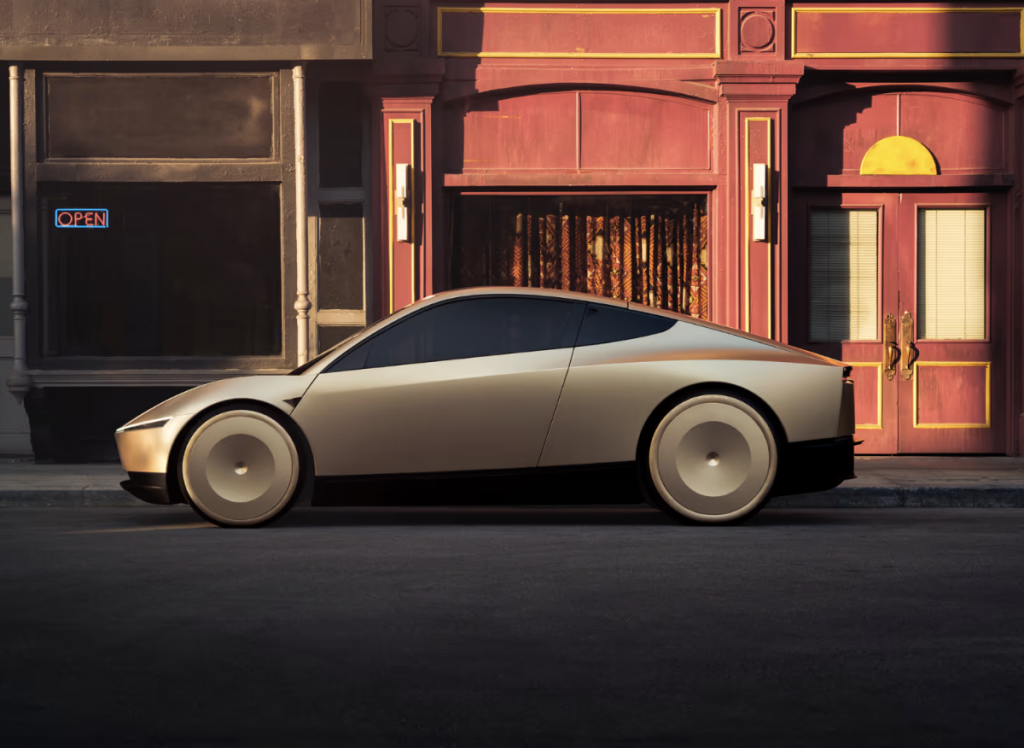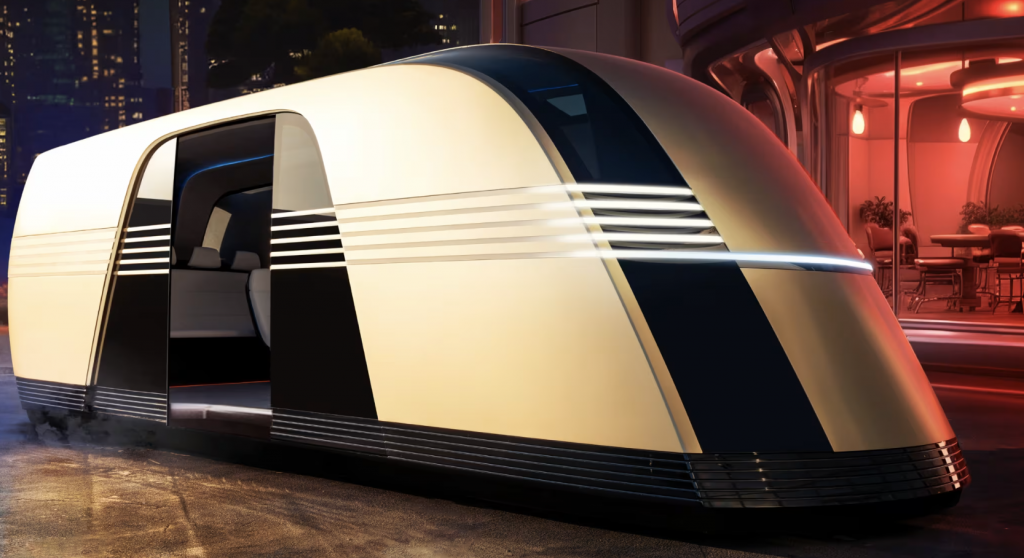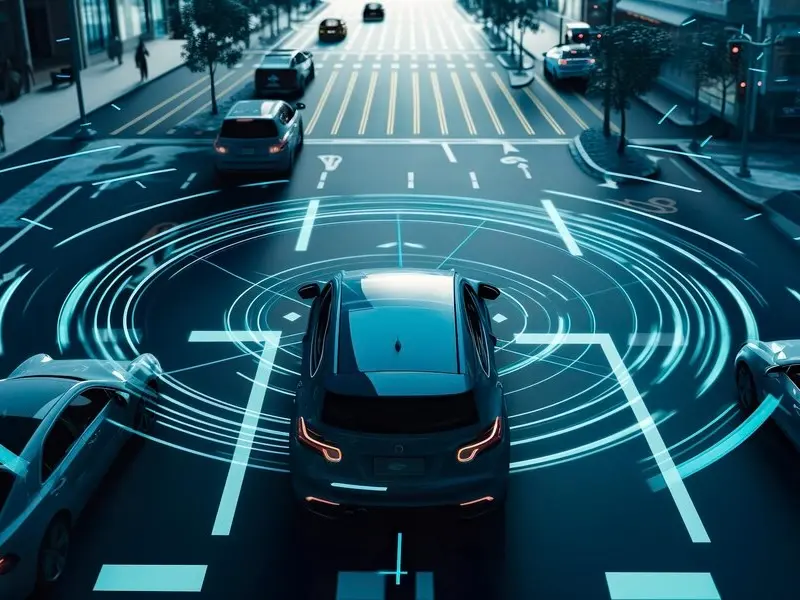- Tesla unveiled the Cybercab, aiming for production in 2026, intensifying competition in the autonomous taxi sector.
- Chinese companies like Baidu and Pony.ai lead the autonomous taxi industry, supported by favourable policies and strong urban demand.
- Tesla faces regulatory hurdles and technical challenges in China, with its FSD software still pending approval amidst fierce local competition.
Tesla introduced a new Robotaxi product, the Cybercab, at its October press conference, aiming to begin production in 2026 and reach mass production by 2027. This launch represents a significant step for Tesla in autonomous driving technology and has attracted industry attention to its position in the global autonomous driving market. Currently, China leads the global market for autonomous taxi services, with several cities already conducting trials and demonstration operations for self-driving taxis. Chinese companies like Baidu, WeRide, and Pony.ai possess strong technical capabilities and a substantial market presence in the autonomous taxi sector.
Tesla’s entry has undoubtedly intensified competition in the global autonomous taxi market. However, the active investment by Chinese companies in policy support, technology research, and market application provides a strong foundation to maintain their leadership globally. In this context, can Tesla manage to dominate the autonomous taxi market in China?
Tesla’s Cybercab and Robovan
Tesla officially launched the Cybercab at the “We, Robot” event. Featuring a striking design with dual butterfly doors, its minimalist interior can seat two passengers comfortably. The car eliminates both the steering wheel and pedals, demonstrating Tesla’s bold strides in autonomous driving technology. It is also equipped with Tesla’s latest Full Self-Driving (FSD) system, enabling fully autonomous driving, capable of navigating complex urban and highway environments. This FSD system is the core technology behind Tesla’s Robotaxi programme. For charging, the Cybercab uses inductive technology, eliminating traditional charging ports to streamline the operation and improve convenience.
Tesla plans to start production of the Cybercab in 2026, aiming for a low operating cost of around $0.20 per mile. To maintain price competitiveness in the autonomous taxi market, the target price is set below $30,000, which will help accelerate the adoption and commercial use of Robotaxis.

At the same event, Tesla introduced a new autonomous van, the Robovan. Its futuristic design, reminiscent of a high-speed train carriage, features multiple strip lights on both ends, enhancing its high-tech appeal. The interior accommodates up to 20 passengers, with seats arranged in two facing rows and large side sliding doors for easy boarding. Like the Cybercab, the Robovan is fitted with Tesla’s FSD system, which eliminates the steering wheel and pedals for full autonomous operation. It is designed for high-density passenger transport, such as sports team travel, or for cargo transport, aiming to significantly reduce travel costs.

Tesla also outlined its vision for a “Robotaxi Network,” allowing Tesla owners to add their vehicles to the autonomous taxi fleet. Passengers can summon a self-driving Tesla via an app, with Tesla charging fees for this service. Once commercialised, Tesla’s Robotaxi and Cybercab are expected to reduce transport costs significantly. Unlike traditional taxis or ride-hailing services, Tesla’s Robotaxi minimises labour costs by using autonomous driving technology. The low operating costs of electric vehicles further enhance affordability, making Tesla’s autonomous transport options appealing to the wider market.
Tesla’s long-term strategy is to build a global Robotaxi network that spans multiple countries and regions, supporting autonomous travel anytime, anywhere. With plans to expand into major global markets, Tesla aims to create a comprehensive, efficient smart mobility ecosystem that revolutionises transport on an international scale.
Also read: Tesla’s robotaxi push: Elon Musk claims driverless cars will be safer with full autonomy
Possible reasons for Tesla’s mass production delay to 2026
Achieving fully autonomous driving involves complex technical challenges, including ensuring vehicle safety and reliability across diverse road and weather conditions. These demands require extensive testing and validation, which could delay production. Additionally, the commercialisation of autonomous vehicles depends on regulatory approval in different countries. Each country has its own laws and standards, and Tesla must meet these varied compliance requirements. For instance, the National Highway Traffic Safety Administration (NHTSA) in the United States enforces strict safety standards.
In the autonomous taxi market, Tesla faces fierce competition from companies like Waymo and Cruise in the U.S. and Baidu and Pony.ai in China. Competing with these established players may require Tesla to invest additional time in refining its technology and services to stand out in a crowded field.
Also read: Tesla delays robotaxi launch amid design changes
The market for self-driving taxis in China
Baidu became the first company in China to achieve fully autonomous driving across mixed urban, ring road, and highway conditions in 2015. Soon after, cities like Beijing and Shanghai began testing and demonstrating autonomous taxi operations. Since 2020, autonomous driving taxis (Robotaxis) have entered trial operations in several intelligent connected vehicle zones in Beijing, Shanghai, and other cities, capturing the keen interest of Chinese consumers. In China, key players in the autonomous taxi industry include Baidu, WeRide, and Pony.ai, all of which boast strong technical capabilities and commercial operation experience.
With government support and rising consumer demand for smart, convenient travel, the outlook for China’s autonomous taxi industry appears highly promising. In 2022, the scale of ecosystem services in China’s autonomous taxi industry reached 300 million yuan. By 2027, the Robotaxi ecosystem service market is expected to grow to 22.7 billion yuan, while the autonomous taxi industry itself could reach 20.8 billion yuan. Hong Jixue who is the director of the Automotive Industry Innovation Research Center at Beijing Northern Industrial University. He stated that self-driving taxis are expected to enter the stage of large-scale deployment by 2030.
Also read: China’s DeepRoute.ai raises $100 mln to drive the future
Self-driving taxis are expected to enter the stage of large-scale deployment by 2030
Hong Jixue, director of the Automotive Industry Innovation Research Center at Beijing Northern Industrial University
Why Chinese firms outpace Tesla in self-driving taxis
Chinese companies introduced self-driving taxis before Tesla, influenced by factors like technology choices, policy support, and market demand. Chinese autonomous driving firms generally use multi-sensor fusion technology, combining LiDAR, cameras, and millimetre-wave radar to enhance perception accuracy and safety. Tesla, by contrast, relies on a camera-centric vision solution, focusing on developing autonomous driving functions for personal vehicles rather than investing heavily in self-driving taxis.
The Chinese government also offers a supportive policy environment for autonomous driving, encouraging innovation and commercial applications. Many cities allow autonomous taxi testing and operations, enabling Chinese companies to complete trials and enter the market swiftly.
Additionally, China’s large cities, with high population densities and strong transport demand, drive the need for autonomous taxis, pushing local companies to speed up development in this field. Although Tesla’s global expansion plan includes China as a key market, its primary focus remains on personal vehicle autonomy rather than scaling autonomous taxi services. Consequently, differences in technology and product focus put Tesla behind local Chinese companies in the autonomous taxi sector.
Tesla’s expansion in the Chinese market faces regulatory challenges, as its Full Self-Driving (FSD) software has yet to gain approval from Chinese authorities. In its global expansion, particularly in China, Tesla must contend with strong competition from local firms and adapt to specific technological demands and regulatory requirements.
Pop Quiz
Which technology approach do Chinese autonomous driving companies use to enhance perception accuracy and safety in self-driving taxis?
A. Camera-only technology
B. Multi-sensor fusion combining LiDAR, cameras, and radar
C. Only millimetre-wave radar
D. AI-based driving without sensors
The correct answer is at the bottom of the article
Future prospects of self-driving taxis
At the October press conference, Elon Musk noted, “Self-driving cars may be 10 to 20 to 30 times safer than a human.” As autonomous driving technology advances and policies support its development, self-driving taxis are expected to gain traction globally. These taxis offer key benefits, such as reducing labour costs by eliminating the need for drivers, which makes taxi services more affordable and accessible. Autonomous taxis also promise to improve traffic efficiency, easing congestion in busy areas and enabling smoother traffic flow in cities. Most importantly, they have the potential to enhance road safety, as autonomous vehicles can react to hazards more consistently than human drivers.
Beyond cost and safety advantages, self-driving taxis are poised to change travel patterns. They provide greater convenience for short-distance shared rides and long-distance trips, especially in densely populated cities with high transport demand. Their adoption will also boost growth in related fields, such as high-precision mapping, artificial intelligence chips, and smart infrastructure, which together support the advanced capabilities these taxis require.
Despite the promise of autonomous taxis, significant barriers remain. Technical challenges persist, especially in ensuring safe operation across varied driving conditions. Regulatory approvals are also crucial, as governments need to establish safety standards. Public trust will be another hurdle, as people must feel confident in the reliability of autonomous taxis. Realising the full potential of self-driving taxis will require collaboration across industries, from technology firms to regulatory bodies, to build a safe, efficient, and trusted autonomous taxi network.
Self-driving cars may be 10 to 20 to 30 times safer than a human
Elon Musk, the co-founder and CEO of Tesla
Quiz Answer
B. Multi-sensor fusion combining LiDAR, cameras, and radar

